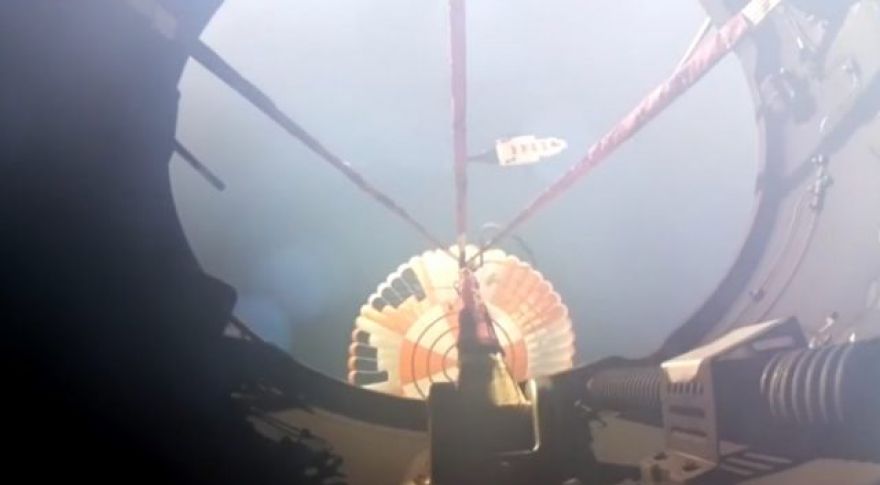
New Video Offers a Better View of Rocket Lab’s Helicopter-Catching Rocket
The days of one-and-done rockets may be coming to an end… . After SpaceX seemingly perfected propulsive landings for the Falcon 9, Rocket Lab is developing another means of reusing rocket boosters. , the company succeeded in catching a parachuting rocket with a helicopter, and now it’s released a much better video showing how it went down.
On May 2nd, Rocket Lab launched a mission dubbed “There and Back Again,” a reference to The Hobbit. The functional purpose of the mission was to deliver 34 satellites to orbit, and that part went fine. The second stage carried the payload off to space, but it’s the first stage booster that got all of the attention.
The newly released video includes footage from the rocket itself and the helicopter tasked with scooping it out of midair. The new footage picks up at about 30 seconds in, when the second stage jets away from the booster (which is an amazing shot). Next, the Electron booster falls into the atmosphere where it deploys its parachutes.
Now these are views we could get used to.
— Rocket Lab (@RocketLab)
At an altitude of about 6,500 feet (1,980 meters), the modified Sikorsky S-92 helicopter catches up with the booster. You can see from both the helicopter’s and rocket’s view as the line hooks onto the line. Unfortunately, this was the high point of the exercise. Rocket Lab confirmed on the day of the launch that pilots decided to drop the booster after discovering “different load characteristics” than they saw in testing. That’s the biggest potential issue with Rocket Lab’s proposed recovery scheme. The parachutes kept the booster from spontaneously disassembling upon reaching the water below, and Rocket Lab was able to fish it out for additional analysis and testing. It might even fly again, but the goal is to keep rockets from taking a saltwater bath.
This was the first time anyone has caught a rocket with a helicopter, but it won’t be the last. Rocket Lab plans to continue testing the system. However, it remains unclear if this is a viable way to reuse rockets. It takes fancy flying to maneuver a helicopter into position to hook a 10-meter metal tube that is subject to wind currents. It also puts people in harm’s way, which is why the pilots opted to drop the booster. In contrast, SpaceX’s landing system is autonomous — even the ship the boosters land on is uncrewed.
Now read: